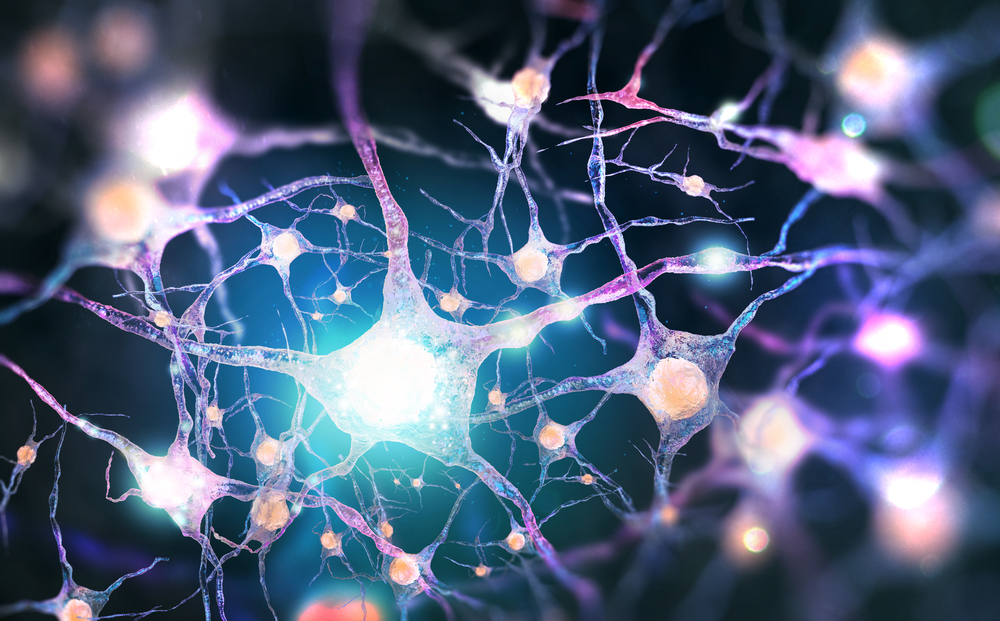Boosting Endocytosis Shows Promise for ALS Therapy, Study Finds

Andrii Vodolazhskyi/Shutterstock
Impaired processing and buildup of protein aggregates associated with amyotrophic lateral sclerosis (ALS) are linked to a protein that regulates the uptake of substances into the cell, a process known as endocytosis, a study found.
Enhancing endocytosis may be an effective strategy to clear protein aggregates from within the cell and treat an underlying mechanism contributing to ALS development, the researchers said.
The study, “Cdc48/VCP and Endocytosis Regulate TDP-43 and FUS Toxicity and Turnover,” was published in the journal Molecular and Cellular Biology.
There is growing recognition that clumps (aggregates) of proteins known to be associated with ALS, such as TDP-43 (TARDBP) and FUS, are linked to motor neuron degeneration.
Under normal growth conditions, the recycling and clearance of TDP-43 within cells has been shown to depend on endocytosis — in which substances are brought into the cell from outside. Typically, accumulated substances within the cell are cleared by a different process, called autophagy.
“If I were to pull a textbook off the shelf, it would say endocytosis is for things that are outside the cell, not inside, so it’s still pretty heretical,” co-author Ross Buchan, PhD, said in a press release.
In fact, evidence suggests that defects in endocytosis lead to TDP-43 protein aggregation and toxicity, including motor neuron dysfunction, while enhancement of the process suppresses aggregation. In human cells, the production of aggregation-prone forms of TDP-43 led to endocytosis impairment.
Preventing the buildup of these aggregates or enhancing their clearance may be a potential therapeutic strategy to treat ALS.
To get a better understanding of the processes that govern endocytosis, Buchan and colleagues at the University of Arizona investigated the link between a known protein regulator of endocytosis called valosin-containing protein (VCP) and protein aggregation.
VCP is mutated in a small fraction of ALS patients, and its abnormal function has been associated with TDP-43 aggregates building up in disease-affected cells, such as neurons in the brain.
The team conducted the analysis using yeast cells, as many of their basic cellular functions are the same as in humans, and they are easy to genetically manipulate. In yeast cells, the protein equivalent of VCP is called Cdc48.
The researchers found that Cdc48 was in the same location within the cell as TDP-43, and further tests showed they directly interacted with each other.
To test how Cdc48 affects TDP-43 recycling, the scientists used a Cdc48 mutant yeast strain. In cells with impaired Cdc48 function, TDP-43 recycling rates were significantly lower, as were the growth rates of the cells themselves, suggesting toxic effects.
Cdc48 was then found to regulate TDP-43 recycling by promoting endocytosis function. Further experiments showed that the processing and toxic buildup of FUS were also governed by Cdc48-facilitated endocytosis. As with TDP-43, the overproduction of FUS impaired endocytosis rates.
The team confirmed the results in human cells, showing the marked buildup of TDP-43 and FUS levels in cells without VCP or reduced VCP.
Analysis of brain tissue isolated from ALS patients mirrored the yeast results, showing VCP in the same places in the cell as TDP-43 aggregates, while healthy controls didn’t show this localization.
“Taken together, our data identify a role for Cdc48/VCP and endocytic function in regulating TDP-43 and FUS toxicity and turnover,” the researchers wrote. “Furthermore, endocytic dysfunction may be a common defect affecting the cytoplasmic clearance of ALS aggregation-prone proteins, and may represent a novel therapeutic target of promise.”
“If we genetically or chemically impede the pathway, then the TDP-43 protein accumulates and becomes super toxic,” Buchan said. “The cool thing, as far as a therapy for ALS is concerned, is that we can also do the reverse. We can make the endocytosis pathway work better by over-expressing parts of it, like putting the gas pedal down so it goes really fast. When we do that, then the TDP-43 aggregates are cleared really efficiently, and it’s no longer toxic.”
“We think if we have a drug that inhibits the negative regulators of endocytosis, the pathway will go faster as a result,” he said. “We have a couple ideas of where to start next.”






